First of all, should we begin by remembering ourselves? What underlies the tension between recollection and forgetting; the desire to remember and the impulse to forget? Can there be a pleasure associated with both? Ultimately, there is a will that envisages a possibility for peace, and imagining its reality is the first steps to making it a reality. This can be a vague and superficial statement, but it can also be profound, perhaps revelatory. So many of our limitations are accepted by us simply because we cannot imagine an alternative. It is astounding, even disconcerting, in a way, to wake up and realise that we are limited in our reactions and our responses simply because we have never seen anyone react in any other way.
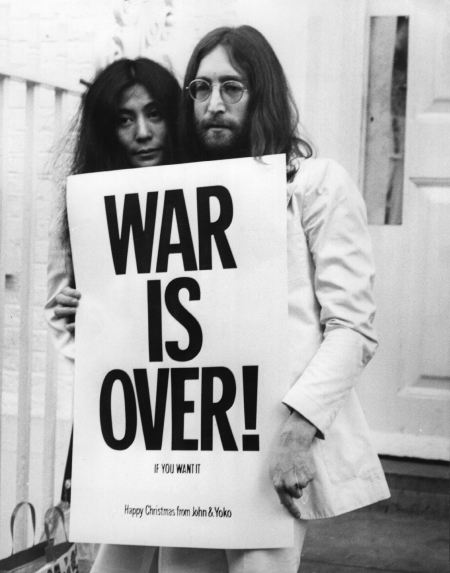
Goethe Institute:In Dialectic of the Enlightenment, Horkheimer and Adorno wrote: 'All reification is a forgetting.' And this sentence describes precisely what has long been the practice of public commemoration in Germany, which has come to resemble a reified ritual. The bio-scientist Jens Reich has compared the 'routine public working up of historical dates' in the Federal Republic to the publicly practiced reified anti-fascism of the GDR: 'The anti-fascism of the GRD also had this stereotypical character, but from the side of the imagined victor, whereas the Federal Republic cultivated the gesture of embarrassed sadness'
Most people think of Nov. 11, the commemoration , collective remembrance, of horror , magnitude and sacrifice of soldiers and their loved ones in all wars since the First World War, as a pause of “regret, remorse and gratitude” . But underlying the ritual, is an undercurrent of militarism, consumerism and racism that seems unavoidable and to which no cenotaph or poppies distributed to aid the victims, can quite erase. We remember the symbols but not the source.
“As a rule, what we are reminded of on these occasions is quite appropriate. But the ritual of commemoration has been reified. And all reification is a forgetting. In this the rituals of remembrance resembles monuments: they fail to keep history alive. The peculiarity of the monument, that it is made of stone, also applies to the current form of public commemoration and its corresponding consciousness: they have become petrified fossils inside us. These petrifications do not contain true history and do not penetrate into consciousness, but contribute to forgetting and neglect.” ( Goethe Institute)
Imagine. Where have all the flowers gone? Flower power and dead flowers. John Lennon was pragmatic enough to know that, at some point, people who seek freedom, will have to take their ideals and translate them into action. And he was sufficiently experienced to know that music can inspire people to act. And he was wise enough to know that the first act to liberation is one of the imagination. Freedom is, first of all, a liberation of consciousness. But freedom for what?…

"As a component of culture, the public practice of commemoration has, like culture as a whole, its own code; that is, it is isolated from all other areas of state politics (social, economic and foreign policy), and is in this sense abstract and more or less confined to the features page. There appears to be a systemically pursued goal behind this, for commemorative practice can only seem the more lively and unearth deep truths the less there is to fear that serious practical consequences for the organisation of state and social structures must follow from these insights. A real reappraisal of the past (and Adorno already pointed this out) does not take place in the mind alone: like education, it too has an objective side."
In the tradition of Western poetry, flowers and flower imagery are inevitably associated with mortality. “Man is in love, and loves what vanishes,” is Yeats’ terse summary of our human condition. Nothing captures the bittersweet brevity, the “vanishingness” or our estate, better than the heart-stopping beauty and simultaneous fleetingness of flowers in bloom. The gathering of flowers is itself a most enduring symbol of human mortality — we are “gathered” by accident, illness, war or, finally, time. Milton made the comparison explicit when he wrote of how fair “Proserpine, gathering flowers/ Herself a fairer flower, by gloomy Dis was gathered.”( Rex Murphy )
“Imagine” is Lennon’s signature song, his anthem: a call to a utopic world of benevolence and peace. But every force evokes an opposite reaction, a dystopic response; “Imagine” is also Lennon’s most widely detested and contested song mainly because of its opening line “Imagine there’s no heaven”, which effectively, of course, means no god,particularly a Christian god, for as the Lord’s Prayer implies,if our father is not in heaven where is he?
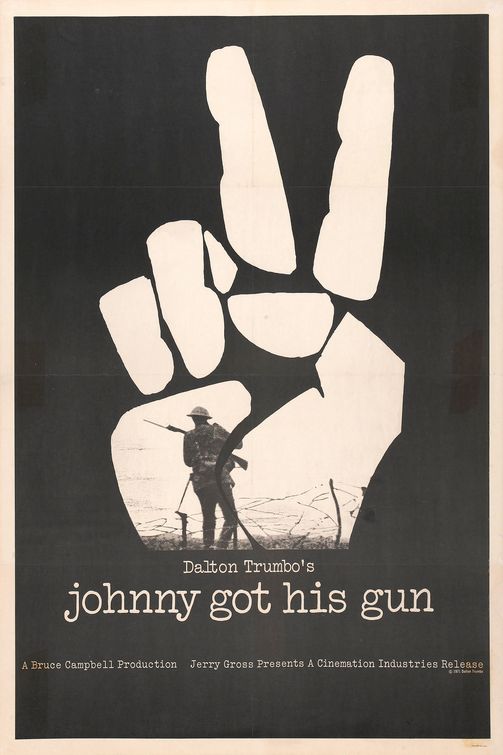
Dr. Marcus Hawel: Yet the constitutional reality of the last fifty years of 'successfully practiced democracy' has not approximated the constitutional norms, but rather moved away from them. Germany has taken part, directly or indirectly, in the recent wars: in former Yugoslavia, in Afghanistan, in Iraq, although they have all been in violation of international law. The Basic Law prohibits a war of aggression proceeding from German territory and places even the preparation for one under the legal punishment of life-long imprisonment. It stipulates that the German army is a purely defensive force. In the meantime, the definition of defence has become boundless: according to Peter Struck, the security of Germany must also be defended in the Hindu Kusch.
…Lennon himself remarked that the song was anti-religion and anti-capitalist, but that it was “accepted” because it was “sugar-coated”. This is largely debatable, although in general, true. Many people who cherish it as an anthem do not really think about what the song says, although they understand what it’s about. While the lyrics could hardly be any clearer, the “unspoken lyrics” of the music, to put it that way, are yet clearer and louder. There is something very big, even massive, in “Imagine”; people are attracted to this, the big spirit that breathes through the song as a whole….
All great English elegies concerned with memory and regret are — as it were — strewn with flowers. The very greatest of them all, Milton’s Lycidas has one of the most remarkable floral passages in verse history. Milton drew upon a great tradition that the world of Nature herself mourns when a good person dies, and Nature speaks or manifests her sympathy through the flowers. He calls for Nature to bring “every flower that sad embroidery wears” to strew his friend’s hearse. Milton writes most eloquently of all of the hyacinth, as “that sanguine flower inscribed with woe” alluding to the myth of Hya
h accidentally killed by Apollo, and Hyacith’s blood staining the lily purple. “Inscribed with woe” might do as a compressed description of all floral mementos of departed loved ones, or for any flowers devoted to the commemoration of those who lost their lives early, either by accident or in the great upheavals of disaster or war. ( Murphy )
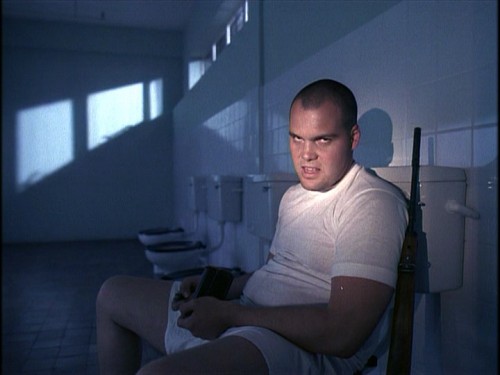
Kubrick. Full Metal Jacket. "All of this had been predicted by the Devil’s Party. Nietzsche saw modern Europe falling into an abyss, and in the 1880s he prophetically warned of a new Age of Barbarism: “There will be wars such as have never happened on earth.”28 After World War I, a similar point was seized on by Franz Kafka: “The buttresses of human existence are collapsing. Historical development is no longer determined by the individual but by the masses. We are shoved, rushed, swept away. We are the victims of history.”29 Any powerful social disruption (such as the two world wars) has the effect of tearing away the social fabric and exposing the reality beneath. In the case of Western society, the cancer revealed had already been diagnosed by the pessimistic humanists."
…The Beatles had split up only about a year before Lennon started working on this song and the album of the same name. His reputation had suffered: for example, he was variously decried as a ratbag, a hypocrite, a fool, and even naive. Oddly, it seems that the accusation of naivety was the one which hurt him the most, it is an easy and odious pejorative that denies someone citizenship in the world of reality. People can disagree on morality, or even on what constitutes wisdom or its opposite, but to call someone naive is to deny them adult status, to refuse to take them seriously. But, a little ridicule was not necessarily ineffective.
Lennon would pretend not to be bothered by it, but he was, and so, mercifully, he pulled the plug on performing “bed-ins”, appearing in a bag in the name of “total communication”, or growing his hair for peace. Lennon fell into all the hot button left-wing political stereotypes, and dallied with counter culture icons like Jerry Rubin and SDS. Yet, even during this period he produced a great rock and roll album, John Lennon /Plastic Ono Band. But that record had not met with the popular success Lennon believed it deserved, and for which he craved. So he adjusted the recipe to be a bit more market friendly and produced Imagine, and that was a success….
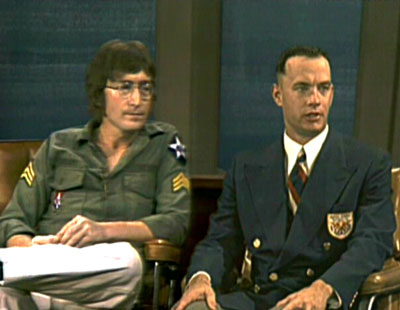
Forrest Gump.Guiness:The difference is that the less alienated are considered sane and the more alienated insane. “The ‘normally’ alienated person, by reason of the fact that he acts more or less like everyone else, is taken to be sane. Other forms of alienation are those that are labeled by the normal majority as bad or mad.”66 Again we have the rationalized maintenance of a psychological normality that leads on to the mystification of violence, whether in the family situation (where the father can never be wrong) or in international relations. On the basis of relativism, can a “just war” be other than a justified war? Laing concludes, “Normal men have killed perhaps 100,000,000 of their fellow normal men in the last fifty years.”
Remembrance Day or Veteran’s Day cannot seem to dissociate itself from a nostalgia and romanticizing of war. There is genuine sorrow and pain of loss and death, but also glints of triumphalism; an absence of what the White Poppy Coalition calls “non-violent conflict resolution,” which would undermine a pillar of Western thought “…Activists have no manners. They are heedless of the sensibilities of veterans and their families who have made the poppy campaign a cardinal national rite since its institution in 1918. Nor can they launch their own little publicity rocket without parasitically leaching off a far more honourable and far more venerable tradition…. ” ( Murphy )
Imagine there’s no heaven, it’s easy if you try;
No hell below us, above us only sky.
Imagine all the people living for today – ah ah, aye.
…First of all, the piano lead in is stately, even hymnic. It was intended to, and it does have an anthemic quality, meaning that the song aspires to ideals usually associated exclusively with religion. This may be part of the paradox of Lennon: no problems with what Jesus had taught, but that people were mesmerised by Jesus, not his message, and religion delivered in its institutional form was an inversion of its founding beliefs. Lennon was marked by ambiguity and love/hate; An uncertainty as to whether the real issues were political and social, or psychological and perhaps even spiritual. After Mind Games, he would retreat from overtly political statements and concerns, and turn more innerly.
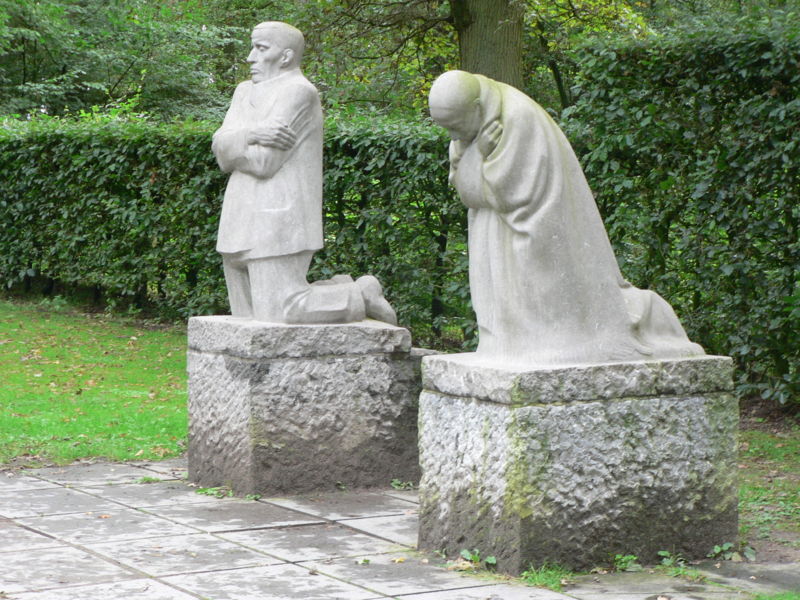
Winter: It is a sculpture of Käthe and Hans Kollwitz, on their knees, in front of a field of graves, including that of their son. The mother’s arms are not extended, but wrapped around her own body; the father’s arms are similarly wrapped around himself. The parents mourn this “flock of children,” this ill-starred generation, whose elders could not prevent the disaster that had enveloped them. Only with difficulty can the visitor find the plaque on which the name of Peter Kollwitz is written. He has become one among many, a child mourned by the parents of a family once large, now reduced to two old people unable even to support each other in their separate grief. All they can do is beg on their knees for forgiveness, and offer their love and their grief, fixed in stone.
Most criticisms of Christianity and Christians, and Lennon’s is no exception, are in fact taking aim at a lack of Christianity, at a failure to live like Christians. With relatively few exceptions, it is not Christianity that people object to but the lack of Christianity, and this is of course harder to accept when there is hypocrisy in the equation. What Lennon is getting at in “Imagine” goes beyond this: he is not attacking Christianity by name, but rather religion and concepts such as God and hell, anything which takes one away from “living for today”, as he puts it. The song goes on to then erase other fixtures of our mental constructions that have been commodified:
Imagine there’s no countries, it isn’t hard to do,
Nothing to kill or die for, and no religion, too.
Imagine all the people living life in peace.
You may say I’m a dreamer, but I’m not the only one.
I hope some day you’ll join us, and the world will be as one.
Imagine no possessions, I wonder if you can.
No need for greed or hunger, a brotherhood of man.
Imagine all the people sharing all the world.
You may say I’m a dreamer, but I’m not the only one.
I hope some day you’ll join us, and the world will live as one.

Jean Renoir. Grande Illusion. Martin Jay: It has long been recognized that the war had a decisive effect on all of Benjamin's later work. As one commentator typically put it, "it is the first world war which provides the traumatic background to Benjamin's culture theory, fascism its ultimate context."15 In particular, it has been acknowledged as a powerful stimulus to his remarkable thoughts on the themes of experience and remembrance, which were to be so crucial a part of his idiosyncratic legacy.
…Perhaps imagination and magic are related. Imagination, in the sense of consciously forming an image and introducing it into one’s thought and feeling as an active element, was a staple of Yoko Ono’s ;What Lennon and One were saying is that we receive all sorts of influences through the media and society. Most of these, as they correctly saw, were based on unthinking prejudices and attitudes. Most of these are needlessly crass and low; hence on “Working Class Hero” from John Lennon/ Plastic Ono Band, he sings: “you’re still fucking peasants as far as I can see”. One has a choice: one can choose to look for better influences, and what is more, everyone can create such influences by using their minds creatively.
Lennon had some insight into this: he saw that it is not just a case of thinking about something like peace. Lennon realised that it needs to be pictured as a reality, and pictured clearly and distinctly desired. That is why he sang: “some day you’ll join us, and the world will be as one.” What cannot be done by parliaments, or United Nations can be done by people: as he sang on “Only Peoplefrom Mind Games: “”only people know just how to change the world.”
And for what is this freedom desired? So that the world may live as one, sharing the world, in peace. It would be easy to critique this as naive or as amorphous, and to show that belief in heaven, hell and religion are not the problem, but rather, lip-service and hypocrisy, that is, insufficient practice of religion, a little tithe and a lot of forgetting. As for the idea that eliminating possessions would also spell the end of greed and hunger – well this is naivety of an absurd level. What could Lennon had been thinking?
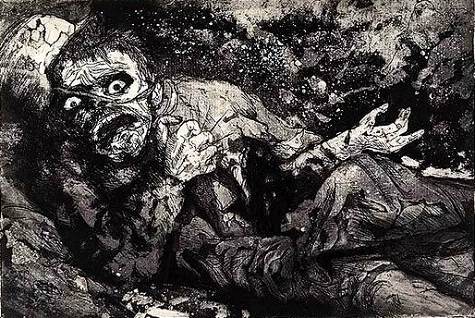
Otto Dix. Walter Benjamin:The modern crisis of experience, or more precisely of the integrated, narratively meaningful variety known as Erfahrung as opposed to mere discontinuous, lived experience or Erlebnis, was thus brought to a head, Benjamin tells us, by the war and its aftermath. No longer can story-tellers lose themselves and their listeners in the nature-like rhythms of tales told over and over again; in the age of mere information, nothing remains beyond the momentary shock of the isolated fact, which defies transmission over time. Despite the efforts by celebrants of the Fronterlebnis such as Ernst Jünger to recapture its alleged communal solidarity, Benjamin knew that the technologically manufactured slaughter of the Western front was anything but an "inner experience" worth reenacting in peacetime. In his trenchant l930 review of the collection edited by Jünger entitled War and Warrior, he ferociously denounced the aestheticization of violence and glorification of the "fascist class warrior" he saw lurking behind this new cult of "eternal" war.17 There could be nothing "beautiful" about such carnage.( Martin Jay )
Some of the flaws in the lyrics are generally made up in the music, and the nobility of what he was aiming at: the transformation of negative emotions into positive: the conviction that hatred can be transformed through consciousness, and that divisions can be overcome by a positive impulse. All that is lacking is an understanding of the necessity and dynamic of a first conscious shock; a spark that lights a candle at both ends – a conscious influence to our emotions and a remembrance of ourselves. But Lennon had started to move towards this insight, realizing that for years he had forgotten himself . This insight may lie behind the reference to people “living for today”. One wonders if we have learned from this, but through the force of gravity, inertia and market forces it has been distilled down to an aesthetic and a style.
ADDENDUM:
Jay Winter: To describe social processes happening on several levels at once requires that we consider who is doing the work of remembrance. I use the term “remembrance” to describe a social process; “memory,” both individual and collective, is its product. Remembrance is active and transitory; it has a beginning and an end, an existence in space and time. Its very delimitation is its strength as a heuristic device. Collective remembrance, the process of public recollection, is the act of groups of people who gather bits and pieces of the past and join them together for a public that will express and consume the constructed memory. What such groups create is not merely a cluster of individual memories: the whole is greater than the sum of the parts.
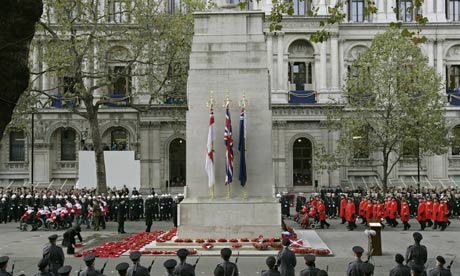
Winter:During the Second World War, the practice was suspended, and after 1945 it was relegated to a holiday known as Remembrance Sunday. Removed from daily life, however, the ceremony lost meaning and atrophied. But even without such official intervention, it would inevitably have faded, as other tasks and other memories crowded out the earlier images and gestures. Once the memory of the bereaved was lost, once those who remembered the dead had themselves died, the original charge of the moment was lost, and the silence would became simply an absence—a void.
How might we apply the idea of “cultural memory” to the subject of the war memorials of 20th-century Europe? Although some of the monuments to war are indeed grandiose and self-serving tributes, many of them manage to transcend state-sponsored triumphalism and to approach the familial and existential realities of wartime loss and death. In the most affecting of these, the tension between remembering and forgetting—between the desire to remember and the impulse to forget—is visible, almost palpable. Many such monuments are “nonofficial” memorials, the work of individuals and groups brought together not by the state but by the need to speak out and to grieve. Created by those who have experienced the trauma of war as an overwhelming, sustained, and mass experience, such memorials work at the intersection of private memories, family memories, and collective memories.








 COMMENTS
COMMENTS



